Review: Arma Hobby 1/48 P.11c
Apologies in advance for the photos - for some reason my digiNikon did not like trying to replicate this color against light blue. Another modeler related similar difficulty, so it's not just me. Trust me, it looks better in person.
History:
The series of fighters designed by Zygmunt Puławski beginning in 1929, were among the most innovative fighters of their generation. Unfortunately, they appeared at the beginning of one of the most innovative periods in aeronautical technical development, and were completely outclassed by the time war finally came. However, while the majority of the world's forces were still using biplanes that were little different from those that fought in the First World War, the P.1 series prototype used a high-mounted, aerodynamically clean gull wing, providing the pilot with a superior field of view; the general layout became commonly known as the "Polish wing" or "Puławski wing". The design quickly drew international attention, thrusting the Polish aviation industry into the front ranks of development. Until the arrival of the Dewoitine D.500 series, the PZL fighters held the distinction of being widely considered to be the most advanced fighter aircraft in the world.
The P.11 sub-series, which appeared in 1932 and entered service with the Polish Air Force in 1934, was a considerable export success. During October 1933, deliveries of the P.11b to Romania began and Industria Aeronautică Română (IAR)built a further 95 designated P.11f, powered by the Romanian-built IAR 9Krse engine. The P.24, a dedicated export model of the P.11, was developed in 1936, which was sold to Bulgaria, Greece and Turkey. Portugal, Yugoslavia and Republican Spain were at one point interested in the P.11. The P.11c, which appeared in 1937, differed from the previous P.11b in having two wing-mounted machine guns in addition to the two mounted in the fuselage.
By 1939, the P.11 was considered completely obsolete, but remained in service due to the delay in developing a replacement or obtaining one internationally. The twelve eskadra (two eskadra constituted a dywizjon, or “squadron”) of the fighter arm included 109 P.11cs, 20 P.11a and P.11b's and 30 P.7a's. A further 43 P.11c's were in reserve or undergoing repairs. Only 35 of the P.11c's carried the full armament of four machine guns, the rest had only two, and most did not have a radio. Two squadrons were in the Pursuit Brigade deployed around Warsaw, with the rest assigned to various armies in the rest of the country. By September 1939, the fighter units had been deployed to remote airfields to protect them from German air attack.
Capt. Mieczyslaw Medwecki was shot down by Rottenführer Leutnant Frank Neubert of I./StG 2 to become the first pilot shot down in the Second World War. The first Allied air victory came 20 minutes later when Medwecki's wingman, Wladyslaw Gnyś, shot down a Ju-87; he later shot down two Do 17s.
The first large air battle of the war took place that morning over the village of Nieporęt just north of Warsaw, when 70 He 111s and Do 17s were intercepted 20 P.11 and ten P.7 fighters, and were forced to turn back. On September 2, nine P-11s of 142 Dywizjon, led by Major Lesnievski, intercepted Do 17s over the Vistula River and shot down seven, two to Lieutenant Stanisław Skalski, for no losses.
Flying Officer Aleksander Gabszewicz of 114 Dywizjon scored the first victory in defense of Warsaw on September 1, flying P.11c 478-N, while Pilot Officer Tadeusz Sawicz later scored two victories flying this aircraft.
A total of 285 German aircraft were lost in the Polish Campaign according to Luftwaffe records, with at least 110 victories credited to the P.11, for the loss of about 100. At the end, 36 P.11s were flown to Romania, where they were taken over by the Romanian Air Force.
The Kit:
The first plastic kit of a P.11 appeared in the 1960s, released by Revell in its series of World War II fighters, in 1/72 scale. Squadron released as 1/48 P.11c under the “LTD” label in the early 1990s, and the Polish company Mirage released what was the best kit of the airplane around 2003. This kit is the first 1/48 kit by Arma, which has made a name for itself in the past year with its release of high-quality 1/72 models of the Hurricane, Yak-1 and FM-2.
The kit easily stands out from anything previous, due to CAD design that provides far more detail. The corrugated wing and tail surfaces are so delicate that it is easier to discover their existence by running a fingernail over the surface than by looking for it; even under the proverbial “coat of paint” one needs to hold the completed model at an angle under strong light to see this detail. The kit includes a fully detailed cockpit and Bristol Mercury engine. Markings are provided for four airplanes and the decals are thin enough to settle into the delicate corrugations under Solvaset.
Construction:
As is usual, construction starts with the cockpit. The photo-etch detail provided in the “Expert” release is actually functional, though the end result when the fuselage is closed up is that much of it ends up in the “I know it's there” category. I found that assembling the headrest, seat and floor as a separate assembly, then attaching the side structure to the respective fuselage halves, and then gluing the seat subassembly to one side with cyanoacrylate glue was easier than trying to assemble the entire structure and attach it, as the instructions would have one do.
The wing was assembled and attached to the fuselage, along with the horizontal stabilizers. The nicely-detailed engine was painted with Vallejo “Dark Aluminum” and painted the collector ring with Vallejo “Copper” brush-painted over the Dark Aluminum. I opted not to install the engine and its cowling until the model was at the final stage after decals and final flat coat were applied.
Painting and Decals:
The lower wings and horizontal stabilizer were painted with RLM 76, a close match to “Polish blue-grey.” I painted the upper surface with a mixture of Tamiya “Linoleum Brown” and “Wooden Deck Tan” that I mixed to match the color in the painting guide. (The color wasn't easy to “get” and the digital brain of my Nikon D500 didn't like trying to replicate it)
The decals went on easily, though I had to apply several coats of Solvaset and slice them in places to get the underwing decals to completely settle down without any flash. There was no problem with the upper wing markings or rudder markings, which also go over a corrugated surface.
I assembled the engine and cowling and attached that subasembly to the model, then attached the landing gear and prop. These airplanes didn't last long enough on operations to get badly dinged, so I did no weathering.
Conclusions:
Arma's first foray into 1/48 is as successful as their previous 1/72 winners. This is definitely the best kit available of this historically-significant airplane. If you take care in assembling the many small parts in the cockpit, the kit presents no problems to any modeler with a bit of experience. Highly recommended.
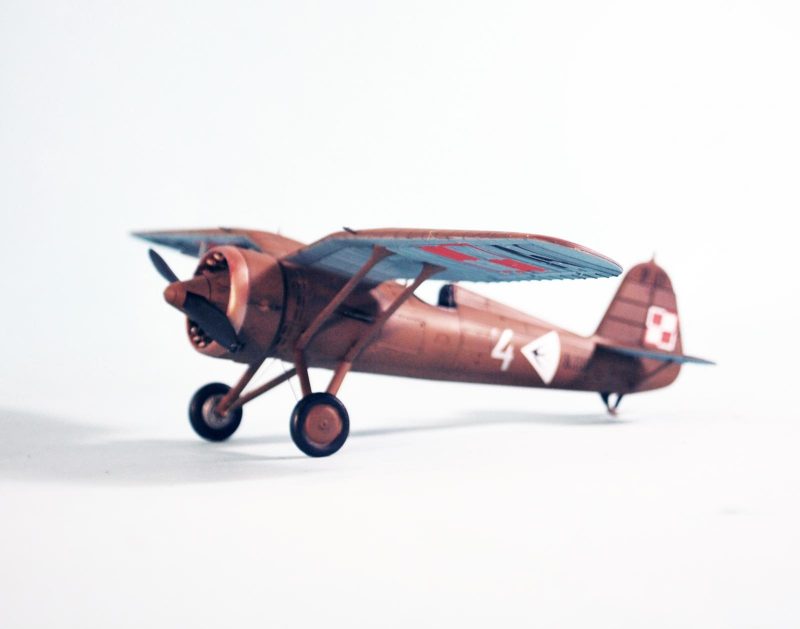

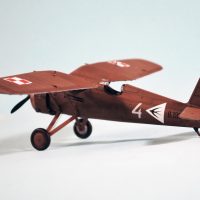
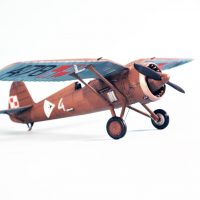
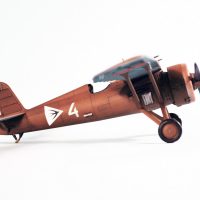
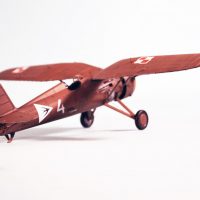
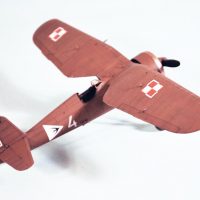
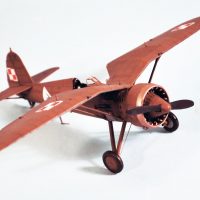
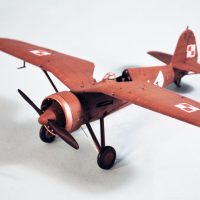
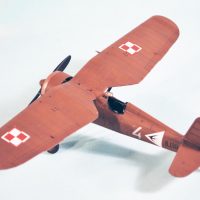
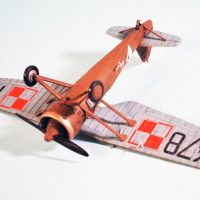

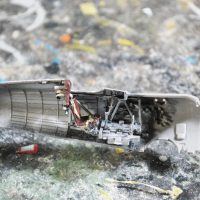
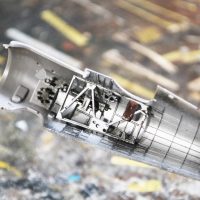
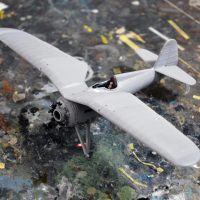

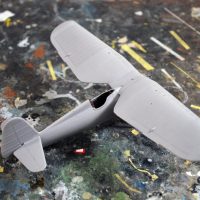
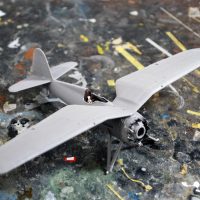
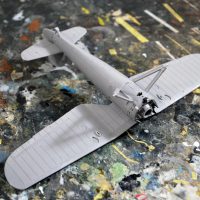
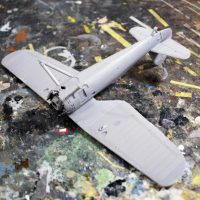
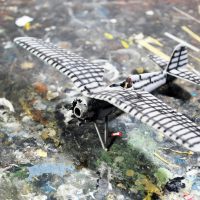

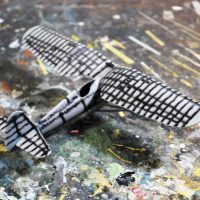

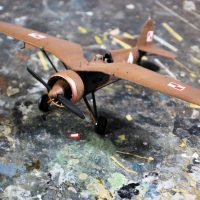
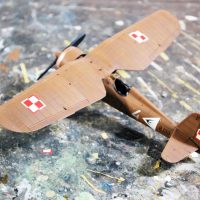
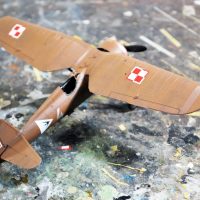
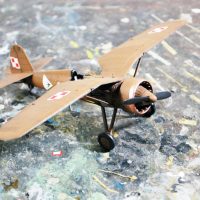
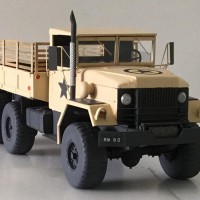
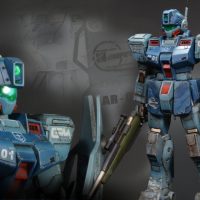

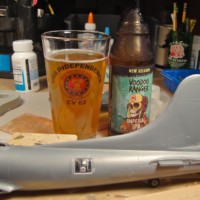
A pleasure to see a great kit of such a significant aircraft. Photos look great too.
Great job with this build and thanks for the informative write-up (always find myself saying 'wow' to myself when I read the background info you provide).
Beautiful. Odd about the photos
Great result, Tom.
Thanks for sharing the information.
It is always interesting to read this.
Well done.
I very much enjoyed Arma’s 1/72 version. Looks like I’m going to have to get this one too. Nice work!
A great model, my friend @tcinla!
A great article, as well!
Turned out great, Tom. Your color choices look good to me. I’ve been saving a discontinued tin of Humbrol 142 khaki drab to use on my Mirage kit.
Looks good Tom. Is this a big improvement over the Mirage kit?
The two kits don't exist in the same universe. This kit takes advantage of all the new technology developments in CAD and in production.
Great model! Those first shots do look more "brown" that I thought should be the true color, but those last images look more like what I was thinking it should be. And that really does look like my expectation of the unusual color of the Polish birds.
Great build and background Tom.
Looks like a really nice kit, you have a great looking build!
Great P.11c! It's nice that this little-known construction from a country from the end of the world was recalled here 🙂 I can add that there was also the P.11g (Kobuz), which was a hybrid of the P.11 fuselage, P.24 wings and the Bristol Mercry engine to the prototype of the P.50 fighter plane. In 14, and 15 september 1939 pilot pilot Henryk Szczęsny scored two victories on this plane over He 111.